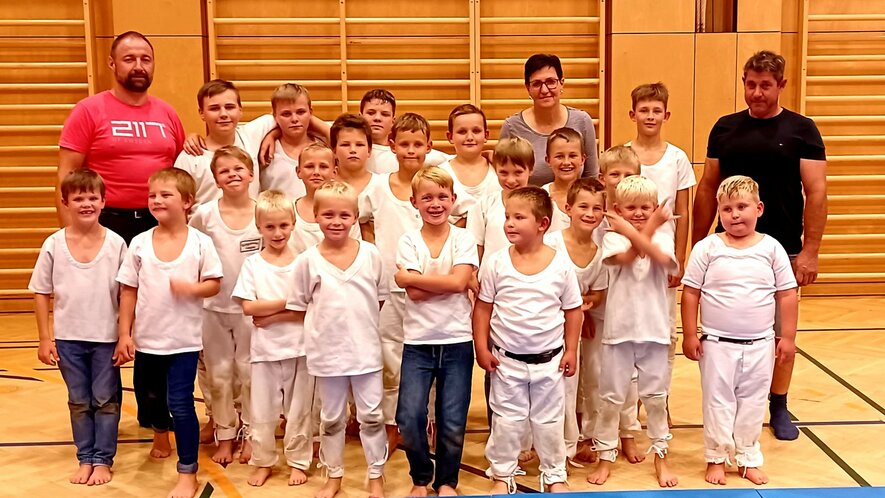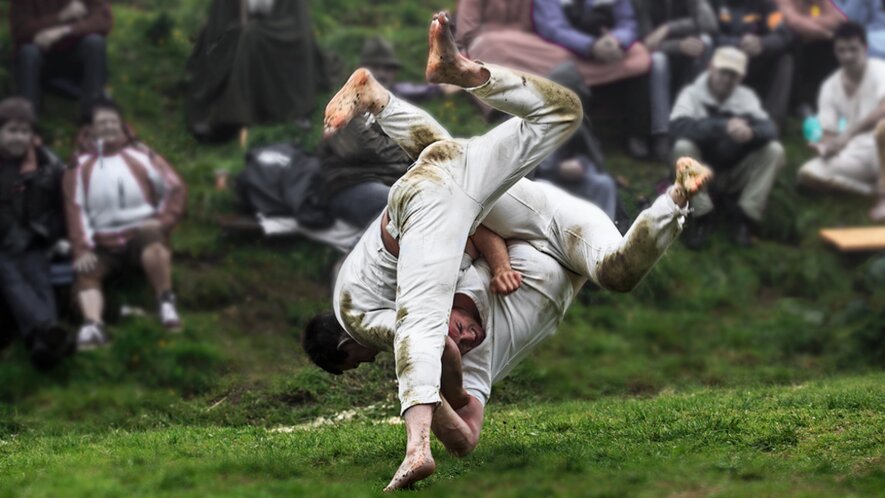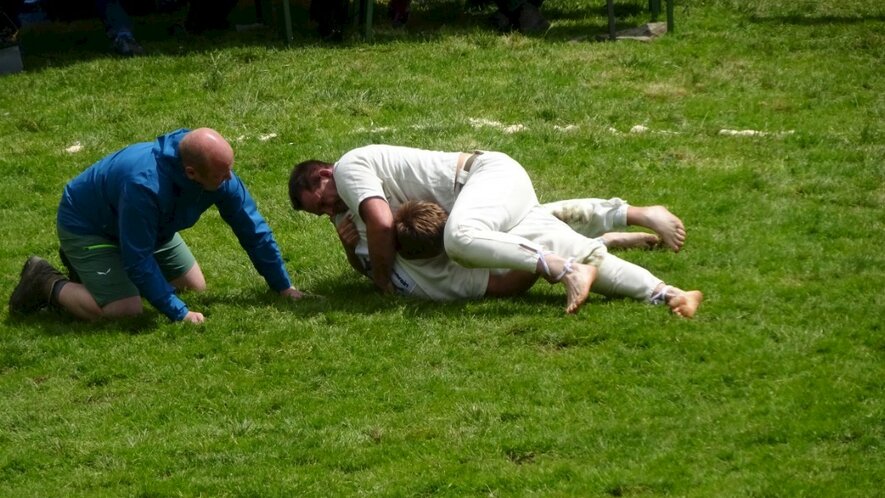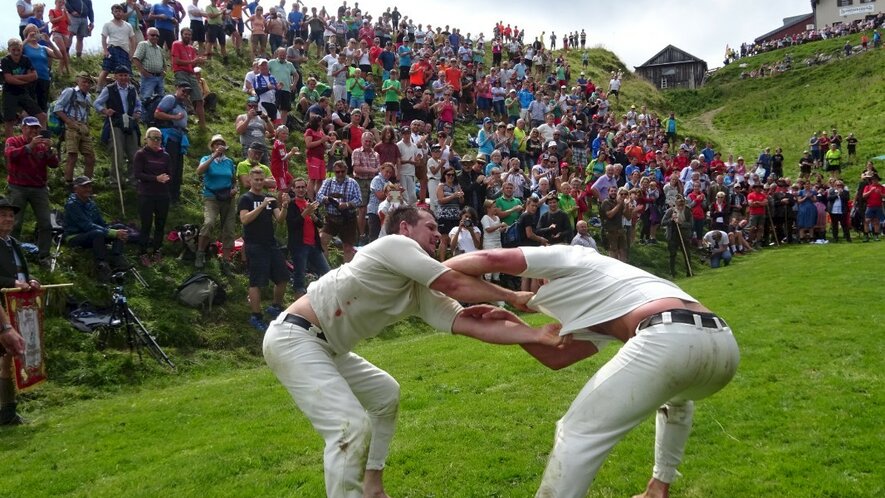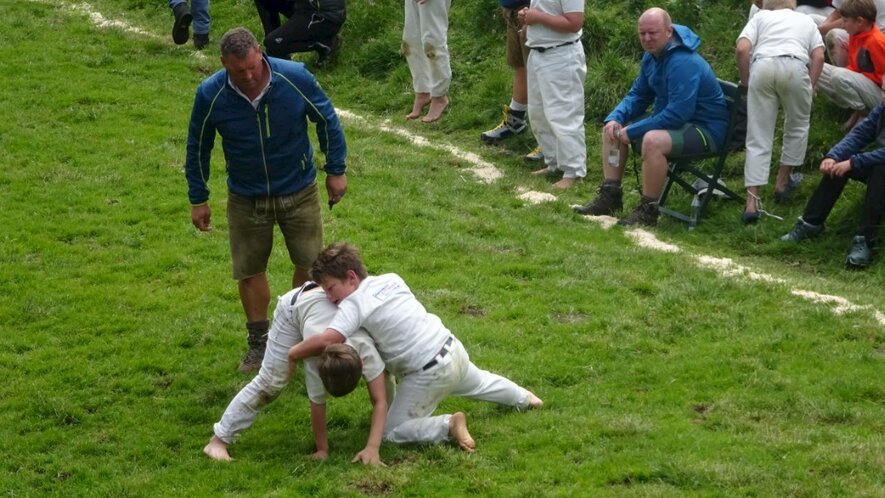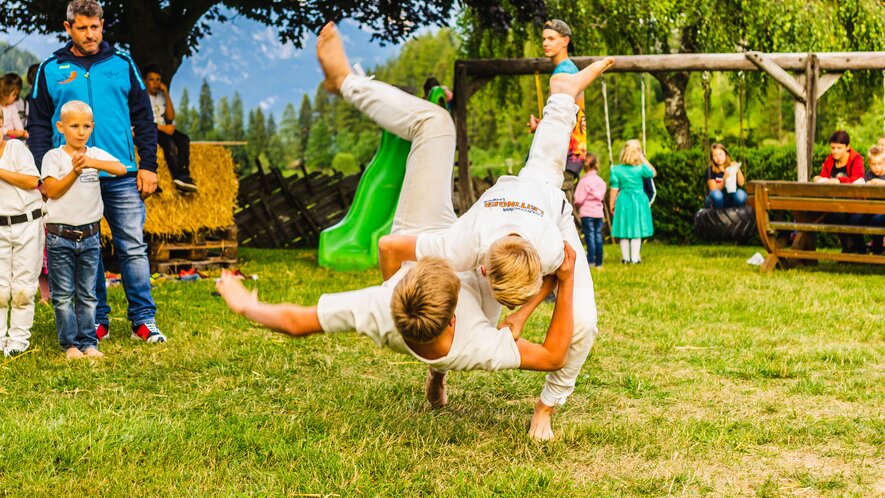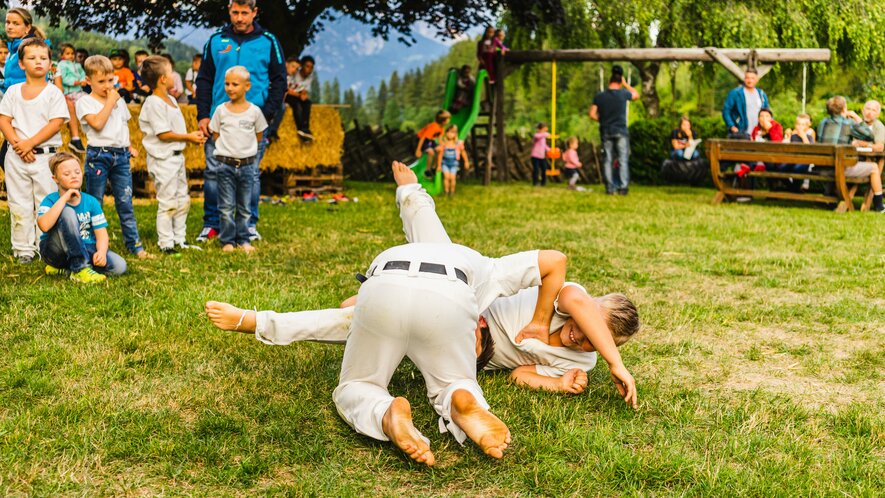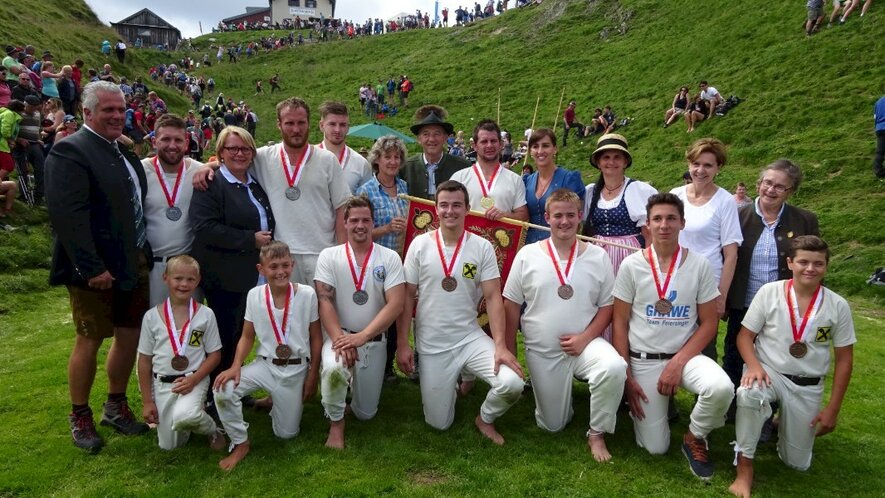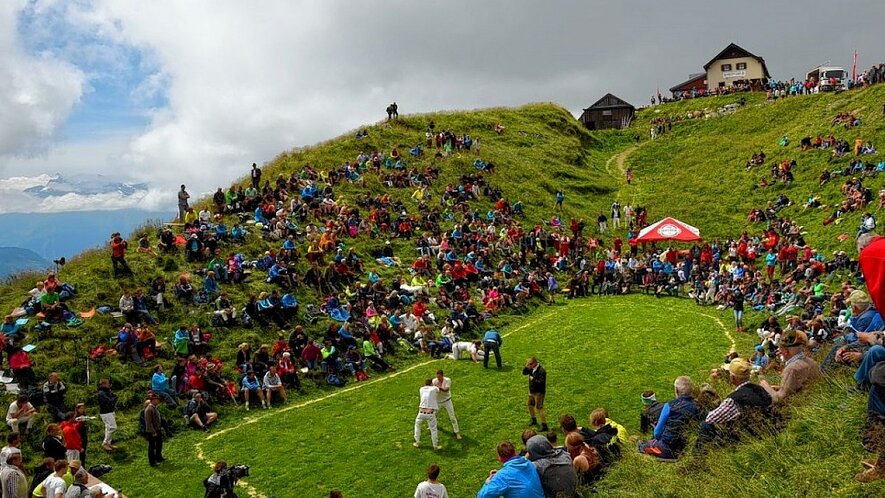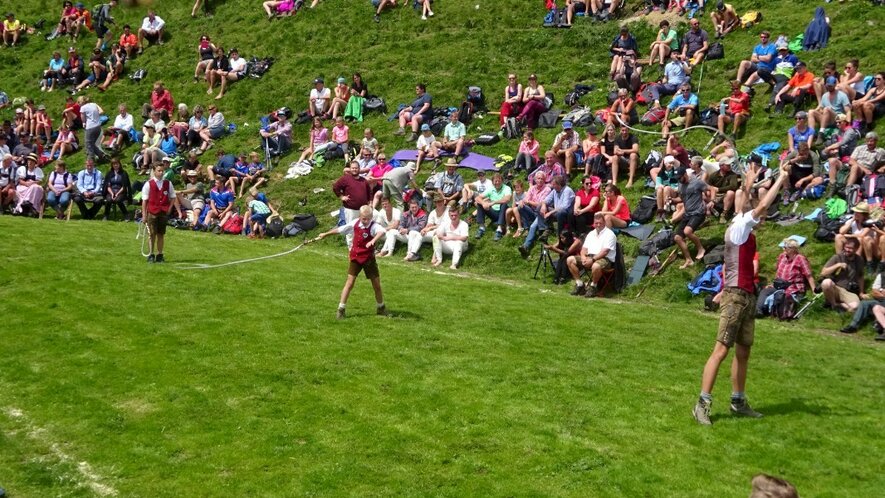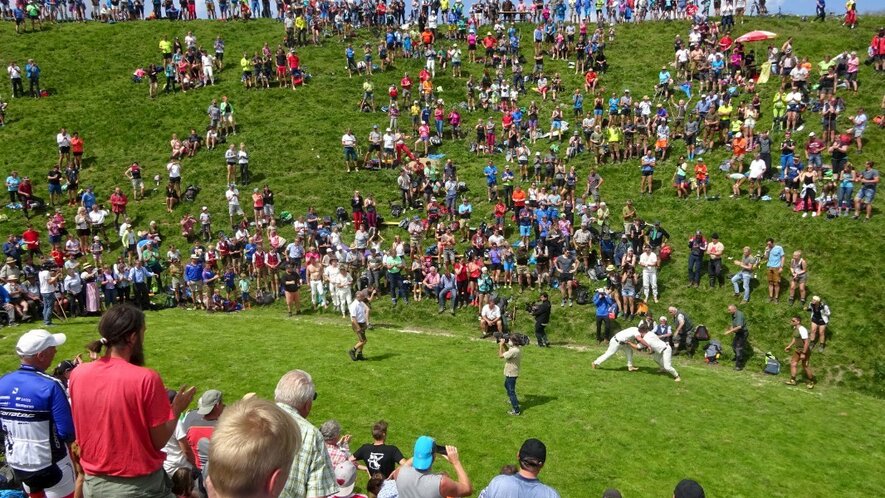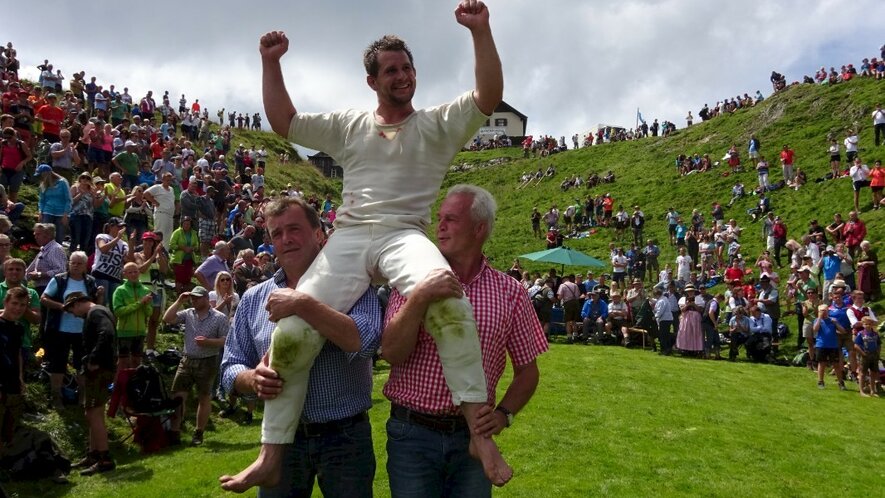Ranggeln to find the Hagmoar
Two words that cause a thoughtful frown for many and almost mean the world to others: "Ranggeln" refers to an ancient, Celtic martial art that has been a tradition in the Alpine region since the 13th century and can be described as a mixture of wrestling and judo. The "Hagmoar" is the winner of the competition and used to enjoy certain privileges for a year.
A woman in a man's world
Actually, the Ranggeln is a pure "man thing". For some years now, however, girls have also become interested in it, but they stop doing it at a certain age. Not necessarily because the girls don't like it anymore. For the boys it is strange to compete against an adolescent woman. Only one woman accompanies the Ranggler since small very closely with. The Leoganger Albert Rofner was 1982 foundation member of the Leoganger Rangglerverein and thirty years long secretary of the Salzburger of national federation and took his daughter Rosi (today Hörhager) to all events along. As chairman of the Leogang Ranggler and secretary of the Salzburg Ranggler Association, she is the female and only exception in the male-dominated Ranggler world.
Cross Throw, Upset & Bulls
So Rosi Hörhager is a real Ranggler expert and knows a lot about it: "Ranggeln is simply about throwing your opponent with his back on the ground using physical strength and various grips and throwing techniques. As soon as the opponent touches the ground with both shoulders, he has lost the fight." Cross throws, hoofers, turn-ups, bulls, knobs and similar holds are allowed, but no pain holds.
Small Ranggler big time
It sounds easy, but it takes a lot of practice. Boys as young as about five years old compete for the first time in an official competition and train up to twice a week. "In general, you can even observe that many rangers only start to win after many defeats. This is probably because the top Ranggler get to know each other well due to the competitions over the year, and thus can also better assess their strengths and weaknesses. It's no use having all that strength if you don't know the technique well."
After a maximum of six minutes is the end
"The fighting time for men is a maximum of six minutes and for students and youths a maximum of five minutes. If no winner emerges after this time, both are eliminated. The competitions will be held in a knockout system." The adult Rangglers are divided into four classes (according to their ability). The master class is class I. Things get really exciting at the end when, after the prize rangling, it comes down to the best of the day, the Hagmoar. Only adult Ranggler of the classes I, II and III may compete.
Showdown of the Leogangers
"As already mentioned, Ranggeln was an important event for many centuries. According to oral tradition, in the 18th and 19th century Ranggler events took place again and again in Leogang, preferably on the Spielberg. Especially in the years 1920 to 1939 there was a lot of Ranggeln - the Rupertiranggeln at the Hüttwirt, which was last held in 1957, is particularly noteworthy. On August 15, 1969, the Leogang Landjugend, under the leadership of Matthias Scheiber, vulgo 'Madreiter Hias', who was later also mayor, revitalized the Ranggeln at Spielberg (initially at the Scheltaualm, today at the Wimbachalm). Since then, the Leoganger Hagmoar is held in mid-August, because only local men and boys are allowed to compete. In order to make the competition accessible to women in a certain way, they are allowed to compete in 'Boahaggeln'."
Hereditary Ranggler genes
It's especially amazing when you look at the Hagmoar list in the short history of Spielberg ranggeln. The brothers Rupert and Georg Eberl together carried home the title twenty times, and the years before that their uncles Rudi and Sepp took it home. And also the sons seem to carry the Ranggler genes again in themselves.
Tradition-rich Hundstoa Ranggeln
In the neighboring community of Maria Alm, the Hundstoa-Ranggeln has been taking place for over 500 years on St. Jacob's Day, July 25, or, if there is no other choice, the following Sunday. Traditionally, farmhands, servants and farmers (sons) marched up to the Hundstein to find the one with the most guts, the Hagmoar, to settle border disputes or to court the fairest dairymaids. Today the Hundstoa-Ranggeln is the biggest of its kind and for the winner it means something as if he had covered the Streif in Kitzbühel as the fastest.
Photos: Salzburger Rangglerverband, Michael Geißler, Rosi Hörhager



